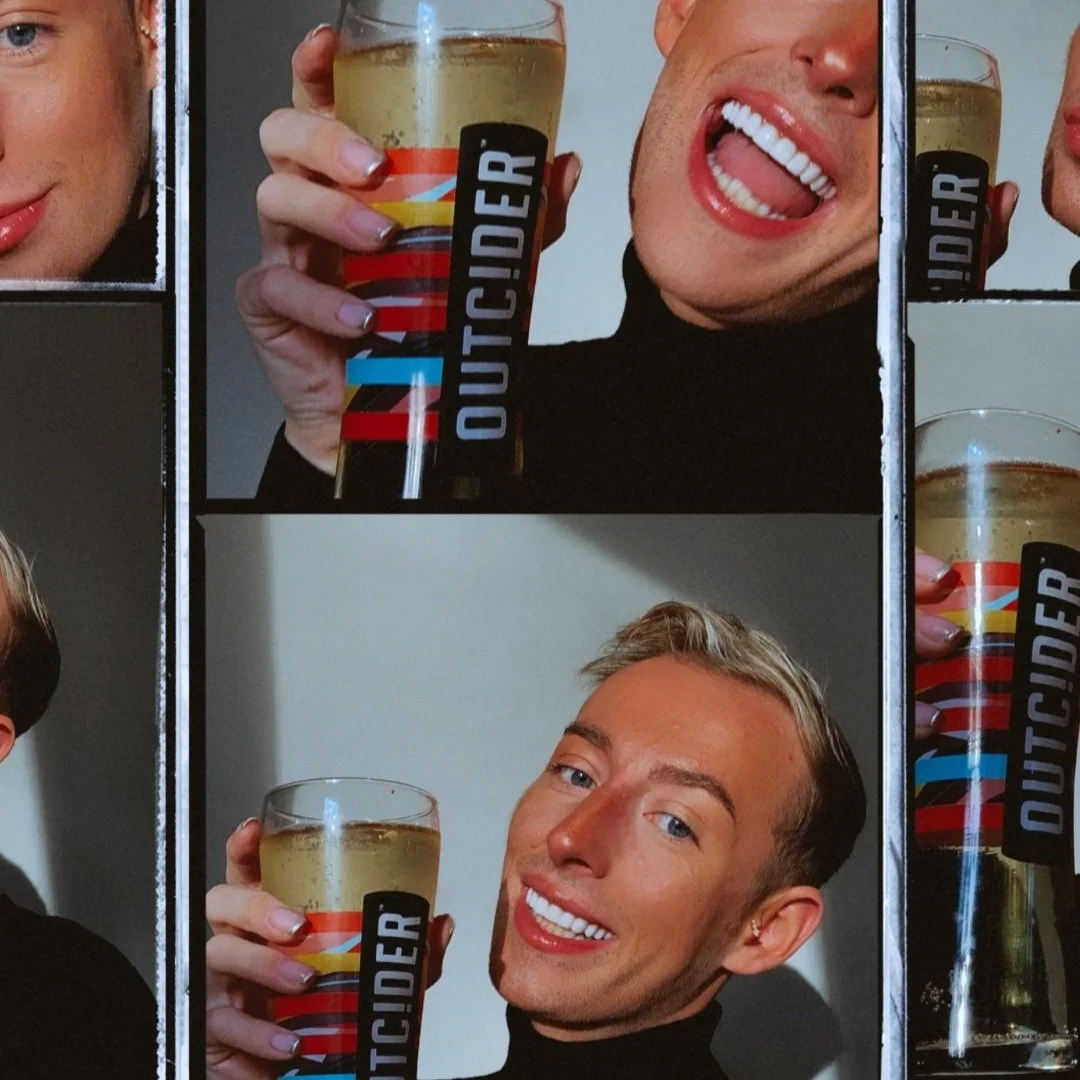The 10 Most Important Influencer FAQs You Should Know.
"How would you approach influencer marketing for rubber floor tiles?"
Probably our favourite Influencer Marketing question that we’ve ever been asked – thanks Barry Adams!
Influencer marketing is a concept that is not new and is more than just ‘a trend’. One thing we’ve found is that even though influencer marketing continues to grow year on year, there are still grey areas and uncertainties on how to approach it amongst marketeers and brand owners.
Part Three Digital are here to myth-bust those misconceptions! We’ve combined the frequently asked influencer marketing questions we regularly hear from client and industry peers as well as some recent questions at our recent talk on The Art of Influencer Marketing.
Here’s what you should know before developing an influencer marketing strategy.
What is Influencer Marketing?
By definition, Influencer marketing is “a form of social media marketing involving endorsements and product placement.” This type of endorsement can be supplied by your favourite online blogger, to someone from your local community or a relevant organisation who have a strong level of social media influence within their field.
Essentially a hybrid of old & new marketing tools, taking the “idea of celebrity endorsement and placing it into a modern-day content-driven marketing campaign” between brands & influencers.
2. What are the benefits of Influencer Marketing?
Collaborating with influencers is a great way to reach new or niche audiences, drive brand awareness and sales.
Some brands don’t tend to look outside of their in-house teams or agencies for content. However, it’s always good to consider and combine new perspectives!
Collaborators are experts in their field, gifted storytellers and content creators. Influencers stay in beta and know what works bests to keep their audiences interested and align with brand campaign objectives.
Still not convinced? Take a look at our findings below:
· 93% of marketers have used influencer marketing in their campaigns and consider it a key advertising strategy.
· 61% of consumers trust the product recommendations they get from influencers vs 38% trust branded social media content.
· 72% asked have gone into an offline store to look at something an Influencer has recommended. Similarly, 71% of people have considered buying something because they saw someone share it online.
· Influencer marketing accounted for 34% of Part Three Digital’s business last year.
· Part Three Digital also found that audiences were 40% more likely to engage with ads featuring influencer content.
3. Are there different types of influencers?
Yes! In terms of a timeline, celebrities were the original ‘influencers’. Then came the era of social media influencers. Now, we’re seeing the latest evolution of ‘Creators VS Influencers’.
Influencers are collaborators who showcase their own lives & influence what their community; buys, wears, & where they eat or holiday. Influencers money mostly comes from Paid Partnerships. Like Alix Earle, an influencer who blew up when her ‘Get Ready With Me’ style videos went viral, her community trusts her recommendations.
Creators often have side hustles, full time jobs or hobbies that they go on to monetise through niche content, which is typically more educational, engaging & interactive. Take @boredoflunch for example. Nathan has turned his passion project during lockdown into a community of air-fryer & slow-cooker fans, publishing two cookbooks & even appearing on This Morning!
Collaborators do not have to be ‘one or the other’ however. Rozanna Purcell is a great example of this – she may have been more on the ‘influencer’ side of the spectrum during her Miss World Days. Having now niched down & nurtured her passions within like-minded communities via The Hike Life & Natural Born Feeder.
4. How do brands find influencers?
With such a large pool of influencers out there, here are our tips for finding the right collaborator for your brand.
Consider:
· Location – not just where they are based but where are their audience based?
· Those who you’ve had previous successful relationships with before, maybe even organically.
· Utilise influencer agencies – they know who are on their books, and who may best fit with brands and campaigns. Their expertise is especially useful if you have a very niche brief such as ‘parent with a baby aged 6 months or older’.
· Look at comments & interactions with like-minded influencers and brands
· Regularly scroll & save influencers to ‘brand boards’ for future reference, this really is the best way to stay at the pulse of new and emerging influencers.
5. Should I work with micro or macro influencers?
There is no right or wrong! Just what’s right for your brand considering a list of factors including budget.
Macro influencers are usually great at getting brands and messages out there to lots of new eyes. But are they within budget? Are they niche or relatable enough to your brand’s target audience? Are they genuinely a brand fan and would they continue to be a brand advocate?
Many brands require niche communities and expertise in a particular area for example; vegan food, sustainable fashion, travel – of which partnering with more niche/smaller micro influencers can be just as [if not more!] effective.
No matter who you choose to work with, working with brand ambassadors on the basis long-term partnerships is favoured, for both authenticity and value. We also prefer to consider ads rights in collaborator contracts and fees, to further utilise their great content & drive awareness amongst like-minded audiences.
6. How much does Influencer Marketing cost?
There is no ‘one-fits-all’ pricing strategy.
Considerations include:
· Followers & Engagement rate – are they micro or macro? How engaged are their community?
· Niche communities/specialisms – you may want to use someone who specifically discusses travel like Sarah Hanrahan.
· Industry Experience & Expertise – for example are they a wine expert like Brigid O’Hara, or a Food Writer & TV host such as Donal Skehan.
· Location – price really does vary by location between Northern Ireland, the rest of the United Kingdom and the Republic of Ireland.
· Media Presence – usually if collaborators appear on TV or Radio, or have almost ‘celebrity’ status, their fee is considerably higher than those who do not.
· Talent Representatives – if collaborators are managed or looked after by talent agencies, they will take a cut so inevitably charge a little bit more.
· Quality of content – some influencers really are ‘content creators’ you are paying for their amazing editing and video skills the way you would a professional videographer.
· The type of content being created – think of this when you are briefing an influencer, a reel that involves a technical recipe, time to shop and build a recipe is going to cost more than a static post.
· Contract duration – will this be an ongoing collaboration? Although more money at the outset, this is a preferred method for authenticity and consistency.
· Exclusivity – will the influencer need to turn down other lucrative contracts to promote your brand, if so this will increase your price.
· Ads Rights – do you want to use the content in ads across other social platforms (great idea!) but you have to pay for this too.
7. What are the laws governing Influencer Marketing?
When collaborating with an influencer, there are guidelines set in place to keep everything correct with regulatory guidelines such as those from ASAI for Ireland. Where celebrities or influencers are sponsored by brands or paid directly to promote a product or service, it must be clear these posts are marketing communications.
An example of essential guidelines to follow are:
The brand must be tagged and labelled as a ‘branded paid partnership’ in content.
All content must be clearly marked with AD at the beginning of post copy, and throughout all content.
Disclaimers should be visible for consumers to see before they interact with or read the relevant material.
When working with alcohol brands and influencers, selection can be a little more difficult. Any influencers deemed a ‘hero of the young’ such as footballer Cristiano Ronaldo, cannot be seen to promote any alcoholic beverages. Due to their young fanbase, they should not be seen to in any way encourage them to start drinking.
8. Which social media platform is best for Influencer Marketing?
Your audience does not care where they find you. They will be happy to stumble across you on whatever social media platform they frequent on but you need to be there!
It’s important to consider the social media platform where your target audience is most active. Consider your niche, their wants and needs and how they would consume content. Pay attention to which influencers and content creators your target audience naturally engages with among these platforms.
Don’t be scared to try somewhere new. The growth of TikTok in the past three years has been incredible. At the end of 2022 they were predicted to have 1.8 billion monthly active users, your target audience could be in that number!
Influencers who use multiple channels such as TikTok and Instagram are a great find for marketing purposes. It makes sense that paid-for-content can be repurposed and optimised for more than one social channel when relevant.
This can be seen in the lovely Melissa Riddell. Melissa is the ultimate beauty and fashion guru. Her beauty, fashion and lifestyle content across both TikTok and Instagram has allowed her to grow a large following with strong engagement across both channels.
9. How do I brief an influencer?
For a full guide and our influencer briefing template, check out The 411 on influencer marketing briefs.
The must haves are…
· Have a clear summary overview of the brand and campaign goals, it is important the influencer understands this.
· Include a rationale of why you wish to work with an influencer.
· A note of key dates and agreed content.
· Detail relevant brand and regulatory guidelines.
· Clear and concise content briefing that they can look back on while creating.
10. How can you tell if an influencer campaign worked?
KPI setting, monitoring & reporting! This is essential to reviewing if a collaboration went well.
UTM links to track which sales came directly from influencer activity as well as reviewing past results like video views and engagement from the influencers you are using (or similar influencers) to create a baseline for the results you want to get.
We often look at KPIs based on how much reach, engagement or video views an influencer gets per follower they have to create really strong benchmarks per location and industry.
And that brings us to another important question that comes up time and time again… will influencer marketing work for every brand?
The answer is… it most certainly can! If implemented & executed correctly,
Interested in working with us on your next influencer marketing campaign? We would love to hear from you, we are always up for a chat or a coffee, just drop us a message 😊



